Flat Roof Fire Performance: What architects need to know
At the start of the year a fire broke out on the roof terrace of the new Ivy Restaurant in Manchester. You’ll see many photographs and videos of the fire available on social media, as the restaurant is surrounded by tall buildings.
Fortunately, the fire, which was believed to be started by a patio heater, was swiftly extinguished by Manchester firefighters. The building is an excellent example of a fire breaking out on a flat roof adjacent to other buildings and illustrates well the need to consider the external fire ratings of flat roofs, both to protect the inhabitants (the Penetration of the fire element) of the buildings but also the people and property nearby (more associated with the Spread of Flame element).
Oh dear…all isn’t well with the Ivy this evening. Could feel the heat from the office. #Ivyfire #manchester #spinningfields #fire pic.twitter.com/Tv1iq1WETO
— Oliver Batey (@OllyBatey) January 4, 2019
This article looks at external fire ratings for flat roofs and covers the following topics in relation to BS 476 Part 3:
- Why do we need external fire ratings for flat roofs?
- What do the rating letters mean?
- What do the Class letters restrict?
- How are the fire rating tests carried out?
- What do the ratings mean in terms of test results?
- What build ups are AA rated?
Why do we need external fire ratings for flat roofs?
The Building Regulations Part B (Fire Safety) part B4 covers the requirement of the external walls and roof of a building to adequately resist the spread of fire over the walls/roof of the building, and from one building to another. Section 10 covers roof coverings, which may consist of one or more layers of material. In the case of flat roofs, the covering will usually consist of the deck, vapour control layers, insulation, waterproofing membranes, and any other layers and spaces.
The performance of roof “coverings” or build ups, is assessed by the application of tests which produces a rating for that build up. The rating or Class consists of two letters, one for each of two tests which correspond with the requirement to prevent a) penetration of fire and b) spread of flame into the building below. Each of the letters can be A, B, C or D giving a combined classification from AA to DD, with A being the highest class and D being the lowest. More about the test in a moment, but first let’s look at the full rating and what it means.
What do the letters mean?
When you specify a flat roof in particular, you’ll prefix and suffix these letters with others like this: EXT.F.AA
- EXT refers to External – referring to the performance of the roof in relation to a fire on or near the EXTERIOR (i.e. not within the building).
- F refers to Flat, as opposed to sloping. Of course, most ‘flat roofs’ are not actually flat, so which flat roofs would this designation apply to?
The definition of a “flat” roof in BS6229:2018 is one having “a pitch of not greater than 10 degrees to the horizontal” which limits the upper scale of the slope to 10 degrees. However, the British Standard goes on to say under clause 4.4, that all flat roof surfaces (including gutter beds) should be designed with a fall of minimum 1:40 to allow a finished drainage fall of minimum 1:80 to be achieved. This would set the lower limit of the definition of a flat roof.
- AA refers to Class according to the two types of test which are carried out. The result of the fire penetration test is dealt with by the first letter, while the second letter refers to the spread of flame test result.
There are other suffixes which can be added to the rating, for instance, “x” which denotes that “dripping” from the underside was recorded, or mechanical failure or the development of holes took place during the fire tests.
What do the Class letters restrict?
The class letters restrict the use of the covering type in relation to their distance from adjacent buildings.
The following table is reproduced from Building Regulations 2010 Approved Document B – you can see it in both volumes (for dwelling houses and for buildings other than dwelling houses). In Volume 1 (dwelling houses) it is Table 5 on Page 48. In Volume 2 (other buildings) it is Table 16 on Page 103.
The table (of which a simplified version is shown below) sets out the minimum allowable ‘Separation Distances’ from any point on a relevant boundary, thereby showing that only AA, AB or AC rated roof coverings/buildups can be used within 6m.
| Designation of covering | Minimum Distance from any point on relevant boundary | ||||
| National Class | European Class | Less than 6m | At least 6m | At least 12m | At least 20m |
| AA, AB or AC | BROOF (t4) | • | • | • | • |
| BA, BB or BC | C ROOF (t4) | ° | • | • | • |
| CA, CB or CC | D ROOF (t4) | ° | •* | •* | • |
| AD, BD or CD | E ROOF (t4) | ° | •* | •* | •* |
| DA, DB, DC or DD | F ROOF (t4) | ° | ° | ° | •* |
Where • is Acceptable and ° is not acceptable.
*NB please refer to the relevant table in the Building Regulations to confirm caveats and notes to this table.
The table shows the rationalisation of UK and European fire ratings and illustrates that there is no differentiation between AA AB or AC. The National Class AA, AB or AC are equivalent to the European Class BROOF(t4) (when tested in accordance with DD CEN/TS 1187:2012) and can be used anywhere on the roof. Other classifications must be at least 6m from any Relevant Boundary.
NB A Relevant Boundary is one that coincides with, is parallel to or is at an angle of no more than 80° to the side of the building on which the roof sits, as set out in the Regulations.
Make sure you check the other stipulations of the regulations.
To determine what Class a particular roof covering/build up receives, samples are put to a series of tests.
How is the test carried out?
The external fire exposure tests for roofs are carried out in accordance with BS 476: 2004 Part 3. This measures the flame spread and fire penetration properties of a particular roof build up.
The tests have been developed to simulate likely situations where there is a fire nearby in a building or on a boundary. For example, if you have a flat roof between two tall buildings and a fire breaks out in one of the buildings it is important to avoid that fire will a) not spread across the flat roof and b) not penetrate the flat roof.
- The manufacturer submits a set of six sample build ups (deck, vapour control layer, insulation, membrane etc) that they wish to be tested to a designated testing centre.
- Each sample is mortared into a rig so that heat and flame can be applied in controlled conditions. For ‘flat’ roofs the samples are tested in a horizontal position.
- The testing centre carries out a preliminary ignition test on one sample using a coal gas flame.
- A Fire Penetration Test is carried out where the upper (external) side of the sample is exposed to radiant heat for 60 minutes and a flame is moved across the surface, whilst penetration of the fire through the build up is recorded.
- A Spread of Flame Test involves less radiant heat but the flame is applied along one edge of the surface for 3 minutes. The distance of the spread of the flame across the surface is recorded.
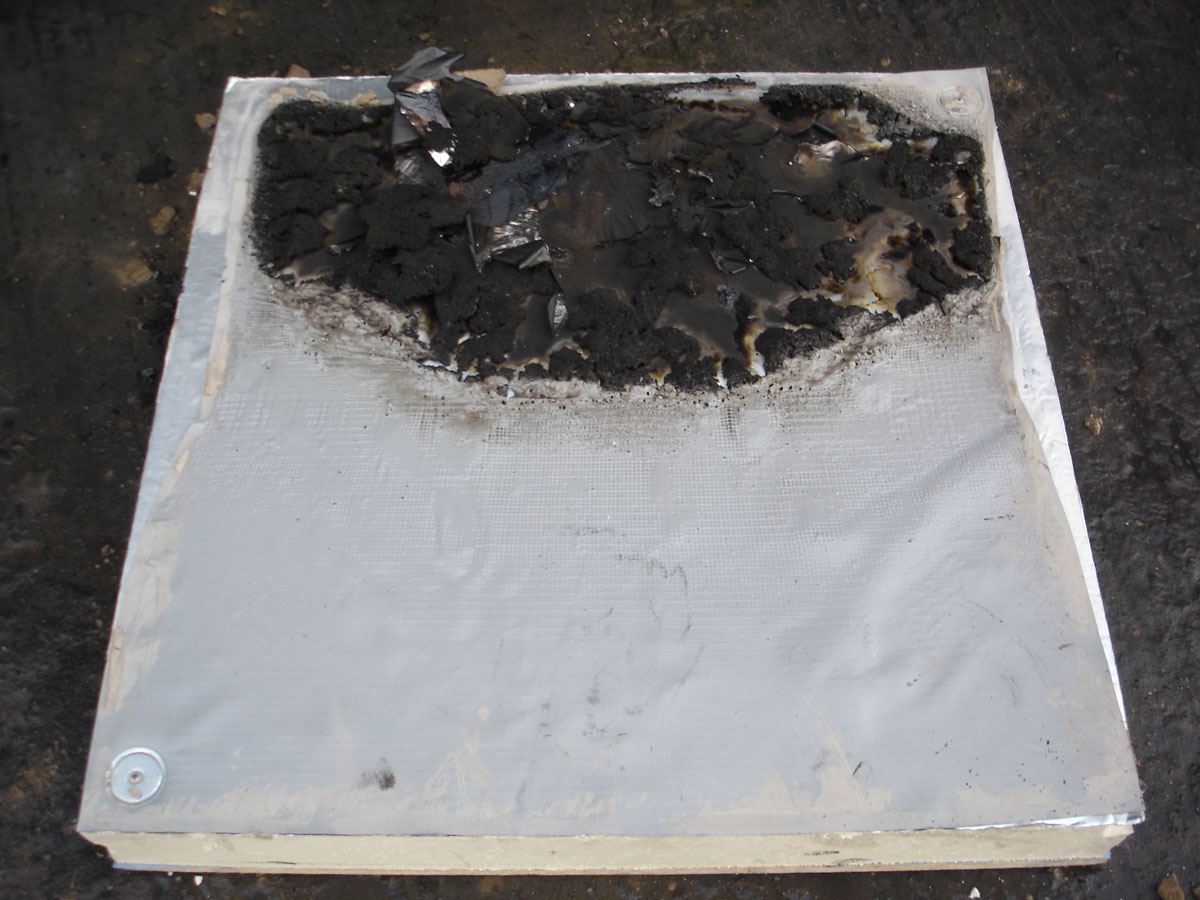
Example spread of flame test – sample after the test is concluded – this sample build up achieved a B rating regarding spread of flame.
What do the AA-DD ratings mean in terms of test results?
The first of the two letters relates to the Fire Penetration Test.
- “A” means no penetration occurred during the 60-minute penetration test.
- “B” means penetration occurred after 30 minutes;
- “C” means penetration occurred in less than 30 minutes, and
- “D” means penetration occurred during the Preliminary Test.
The second of the two letters relates to the Spread of Flame Test.
- “A” means no spread of flame occurred during the 3-minute spread of flame test.
- “B” means the flame spread less than 533mm during the test;
- “C” means the flame spread more than 533mm during the test, and
- “D” means the product continued to burn for longer than 5 minutes after the pilot flame was removed, or the flame spread was greater than 381mm during the Preliminary Test.
An AA rating therefore means fire penetration has not occurred within an hour of the test commencing and there was no spread of flame.
In comparison, BB means test specimens were penetrated in not less than 30 minutes and the spread of flame was less than 533mm.
Both the spread and penetration tests initially affect the outermost layer of any build-up, however it is the whole build up that receives the rating, as all parts contribute towards performance. Products, systems and build-ups are formulated, designed and tested to ensure compliance. There is no sense in having one particular product within a build-up that achieves or exceeds either part or all of the requirements if, when it is incorporated within a build-up, that component fails.
For more information on the rating system, see the full BS 476 part 3.
What build ups are AA rated?
So, for the National Class designations, AA is the top fire rating possible for a flat roof build up.
One product which is included in tested flat roof buildups, which achieves an AA rating is SIG’s SIGnature Torch-On System, exclusive to SIG Design & Technology. The SIGnature range is a torch-applied built-up bituminous membrane roofing system. The range was recently awarded the BBA (British Board of Agrément) certification. Each membrane option features an EXT.F.AA fire rated system build up as standard.
SIGnature is manufactured from bitumen membranes using polyester reinforcements with exceptional mechanical strength and dimensional stability. The reinforcements are impregnated and then coated with specially formulated SBS (Styrene Butadiene Styrene) modified bitumen or APP modified bitumen.
A cold applied self-adhesive underlay is available, and the option of either torch applied, or self-adhesive aluminium lined vapour control layers accompanied by a full range of insulation and ancillary products ensures a full system warranty.
A choice of different SIGnature Underlays determines the warranty period; which is either 20 years, or 25 years if the underlay is used in conjunction with the SIGnature Fire Rated Cap Sheet.
Products which are classified as AB or AC (with a lower threshold in terms of flame spread) are also available for use within 6m of a boundary. Whilst an A class in flame spread is desirable, and you or your client may require it, alternatives are available. Contact us if you have a question about your project.
Image credit: House Fire by Adam Belles (creative commons)




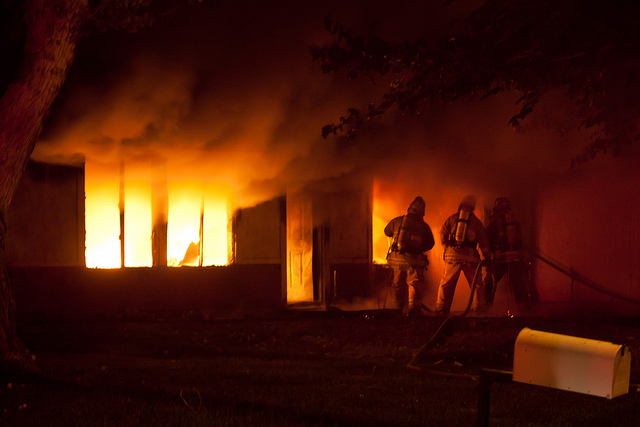
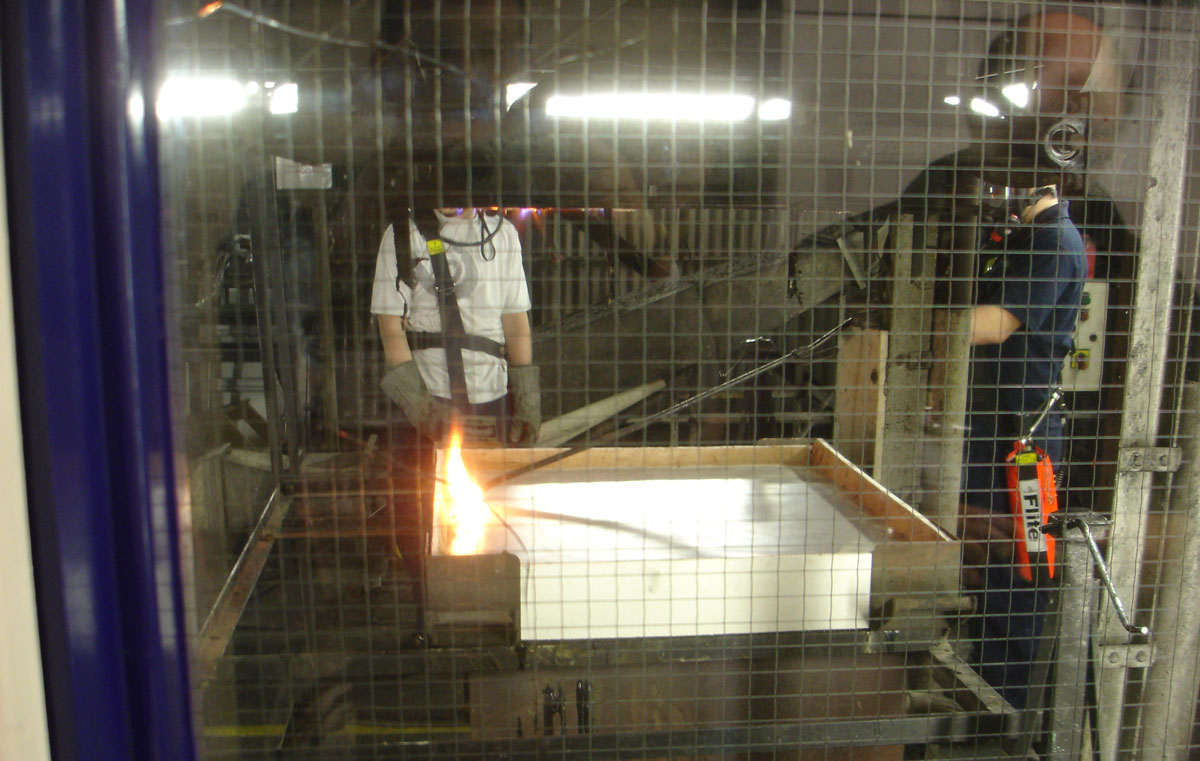
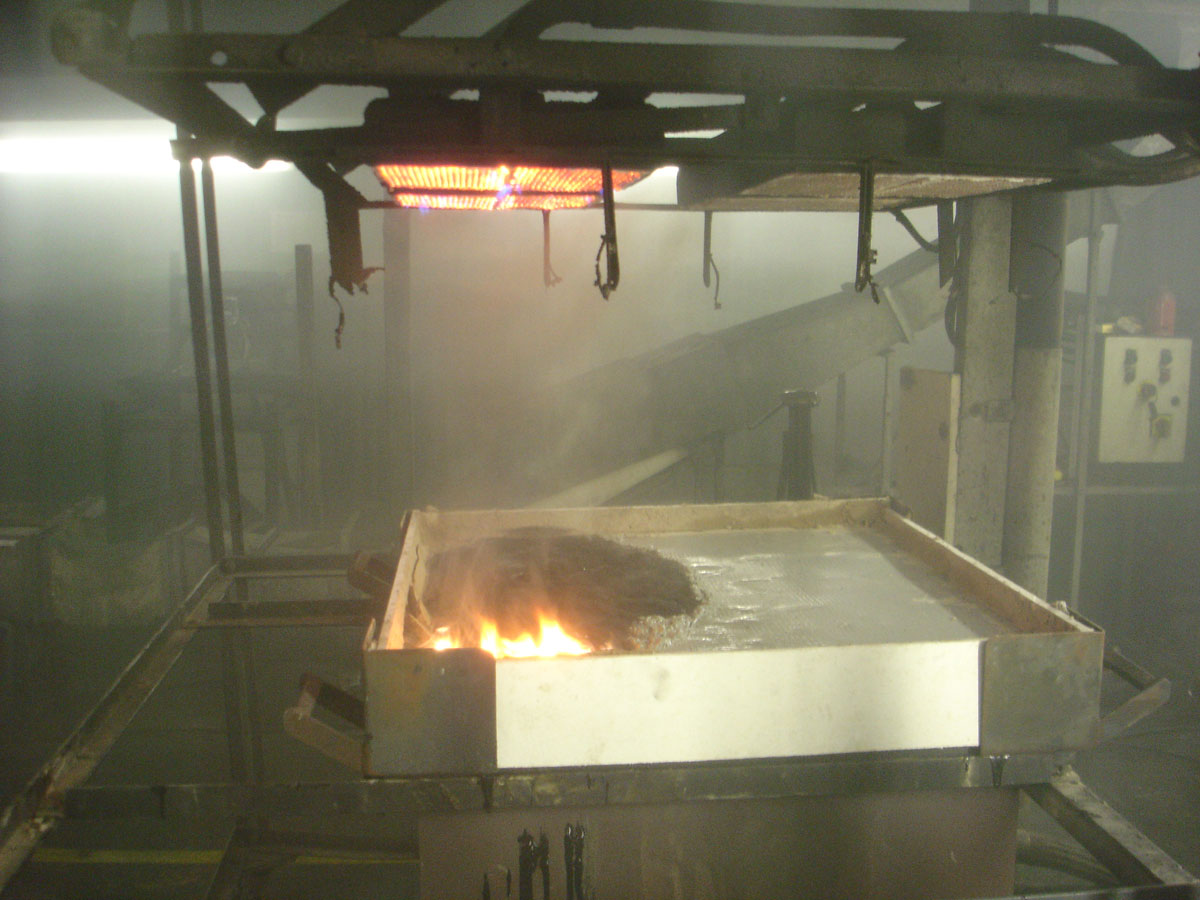
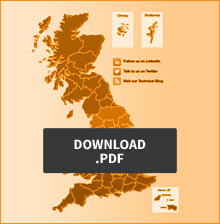








Great post! lots of good info here!
[…] What is BROOF(t4)? There’s no such thing as a stupid question. Here’s a blog post explaining external roofing fire testing methodology and terminology. […]